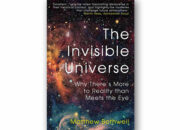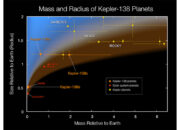In the realm of contemporary scientific endeavors, few projects engender as much intrigue and aspiration as the International Thermonuclear Experimental Reactor (ITER). The narrative that unfolds with Europe’s recent triumph over Japan in securing the ITER Prize signifies not merely a victory in the sphere of nuclear research, but rather an emblematic step towards realizing the age-old dream of harnessing fusion energy. It is a dream fraught with challenges, yet sparkling with the promise of an inexhaustible energy source, akin to the mythic quest for the Philosopher’s Stone that promised not gold, but immortality.
To grasp the significance of this achievement, it is essential to explore the intricate tapestry that defines fusion energy. Fusion, the process that powers the stars, involves the amalgamation of light atomic nuclei into heavier ones, releasing an enormous amount of energy in the process. The sun, a colossal sphere of plasma, exemplifies this phenomenon in action. In stark contrast, terrestrial efforts to replicate such conditions mirror the ancient alchemists’ pursuits—merging the ephemeral with the practical, the imaginative with the scientific. However, unlike traditional alchemy’s illusory goals, fusion bears an intrinsic validity, rooted in the laws of physics.
The ITER initiative, a collaborative endeavor involving 35 nations, is positioned at the confluence of ambition and necessity. With the shadows cast by climate change and dwindling fossil fuel reserves, the motivation for pursuing fusion has never been more compelling. Europe’s recent accolade symbolizes an acknowledgment not simply of technical prowess, but of a collective vision that binds nations towards a singular purpose—achieving sustainable energy that is both environmentally benign and abundantly available.
This victory is reminiscent of ancient maritime explorations when nations vied for new trade routes, driven by the tantalizing allure of untapped resources. The spirit of competition that pervades the ITER landscape underscores the essential interplay between rivalry and collaboration in scientific advancements. While Japan, with its rich heritage of technological innovation, presented a formidable challenge, Europe’s success delineates a paradigm in which strategic alliances and interdisciplinary approaches can surmount even the most daunting challenges of modern science.
A closer examination reveals the underlying mechanics of the ITER project that contributed to Europe’s ascendance in this context. The tone of technical sophistication permeates the ITER Complex in Cadarache, France, where intricate engineering and advanced materials converge to create a reactor capable of simulating the nuclear fusion processes that occur naturally in stars. Here, superconductors and cryogenics are not just mere components; they represent the synthesis of human ingenuity and scientific foresight. The excitement surrounding ITER lies not merely in the construction of a machine, but in the aspiration to ignite a self-sustaining fusion reaction, much like kindling a flame that will transcend generations.
Moreover, it is imperative to appreciate the societal implications implicit in this scientific pursuit. The promise of fusion energy is akin to a beacon for a burgeoning civilization, illuminating pathways towards energy independence and a significantly reduced carbon footprint. The ethical considerations accompanying energy production necessitate a discourse that highlights fusion as a legitimate candidate for future energy paradigms, positing it as an antidote to the environmental malaise fostered by conventional energy sources. The dialogues brewing within this interdisciplinary framework echo the relevance of social responsibility intertwined with scientific accomplishment.
Yet, navigating the complexities of fusion research is not devoid of obstacles. The quest for achieving the conditions necessary for fusion—tens of millions of degrees Celsius, pressures resembling those in the cores of stars, and the containment of superheated plasma—beckons forth a cavalcade of engineering challenges. Achieving stable plasma confinement is akin to attempting to hold lightning in one’s bare hands—a metaphor that aptly encapsulates the volatile nature of fusion. The journey thus requires a confluence of diverse scientific disciplines, ranging from plasma physics to advanced computational modeling, underscoring the universal truth that in science, as in life, collaboration breeds innovation.
As Europe celebrates its achievements at ITER, it becomes ever clearer that the implications of winning the ITER Prize extend far beyond the confines of the laboratory. The symbolic nature of this victory serves not merely to reinforce European leadership in fusion research, but also to invigorate global engagement in seeking solutions to one of humanity’s most pressing concerns: sustainable energy. The triumph can thus be viewed as a prelude to a larger, overarching narrative—a narrative that champions the integration of scientific ambition with social responsibility.
Ultimately, the saga of fusion energy continues to unfold, much like a grand narrative woven through time. Drawing from the interplay of myth and reality, of aspiration and accomplishment, the ITER initiative encapsulates the quintessence of human resilience and inventiveness. As nations navigate through the cyclical tides of competition and collaboration, the dream of achieving practical fusion energy edges closer to fruition. It invites society to ponder: in a world where energy abundance is the ultimate goal, how will humanity wield this newfound power, and what future narratives shall unfold from its embrace?












